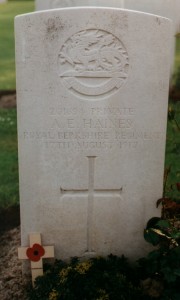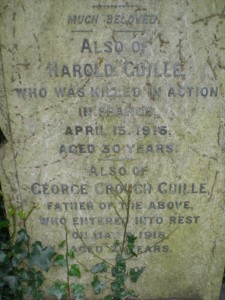Oliver Luther Hawkins
Second Lieutenant
3rd Battalion East Yorkshire Regiment.
Division 29
 |
 |
Oliver Luther Hawkins was the son of William Slade Hawkins and is commemorated on the family grave on the corner of the division next to the boundary wall. He died of wounds during April 1915. The date of death on the cemetery headstone is 23rd April 1915, that of the CWGC register 26th April 1915. He was aged 22.
Oliver Hawkins is buried at Hazebrouck Communal Cemetery, North France. Location II.E.28. Hazebrouck, is a town about 56 kilometres from Calais and is easily reached. From October 1914 to September 1917 Casualty Clearing Stations were posted at Hazebrouck. Although, from September 1917 to September 1918, enemy shelling rendered the town unsafe for hospitals.
It is likely that Oliver Hawkins had gone through the initial parts of the usual evacuation process of the wounded but succumbed to his injuries before reaching a base hospital. The Second Battle of Ypres was taking place at the time of his death.
The 1901 census indicates that the family lived at 97 London Road, his father was a private secretary. He had one sister and three brothers. The 1911 census indiates that he was a border in School House, Reading School. At Reading School Oliver was a popular sportsman and gifted student. He won the Lord Roberts prize and distinctions in cricket and football. Oliver studied for a time at Marburg University, Germany and in 1913 went to Jesus College, Cambridge. Whilst at Cambridge he joined the OTC and obtained a commission. The headstone of the family grave bears sad testimony to the early deaths of several family members. His father died in November 1915.


